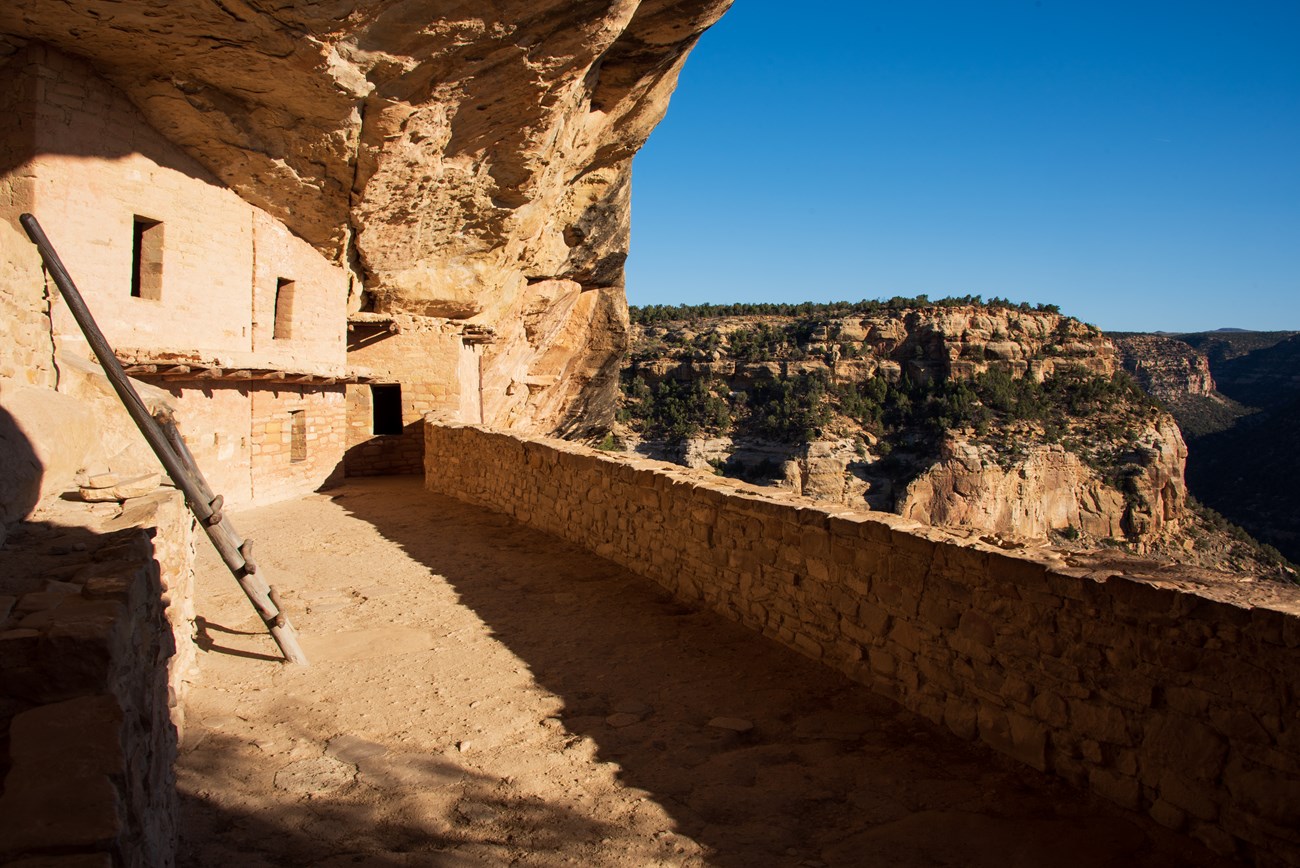
“Balcony House, with its well-preserved rooms, kivas, and plazas, stands as a tribute to those who built and occupied the site in the thirteenth century, the ancestors of the Pueblo Indians of Arizona and New Mexico. Balcony House is also a tribute to the men who excavated and stabilized the site in the early part of the twentieth century…” (Kathleen Fiero, Balcony House: A History of a Cliff Dwelling, Copyright 1999 by Mesa Verde Museum Association.) Balcony House was a mid-sized village of 38 rooms and two kivas and probably housed up to 30 people. Two naturally-occurring seep springs were located nearby, one within the alcove and one just below. Interestingly, its alcove faces northeast, which means the homes inside received little warmth from the sun during the winter months. Perhaps residents considered other needs, such as easy access to water, more important. Evidence of how room and passageway construction in the alcove evolved through time can easily be seen in Balcony House. Today, the tunnel, passageways, and modern 32-foot entrance ladder are what make it the most adventurous cliff dwelling tour in the park.
Balcony House Late 1880s and Balcony House Today 

Left image
Right image
|
Last updated: April 21, 2025
